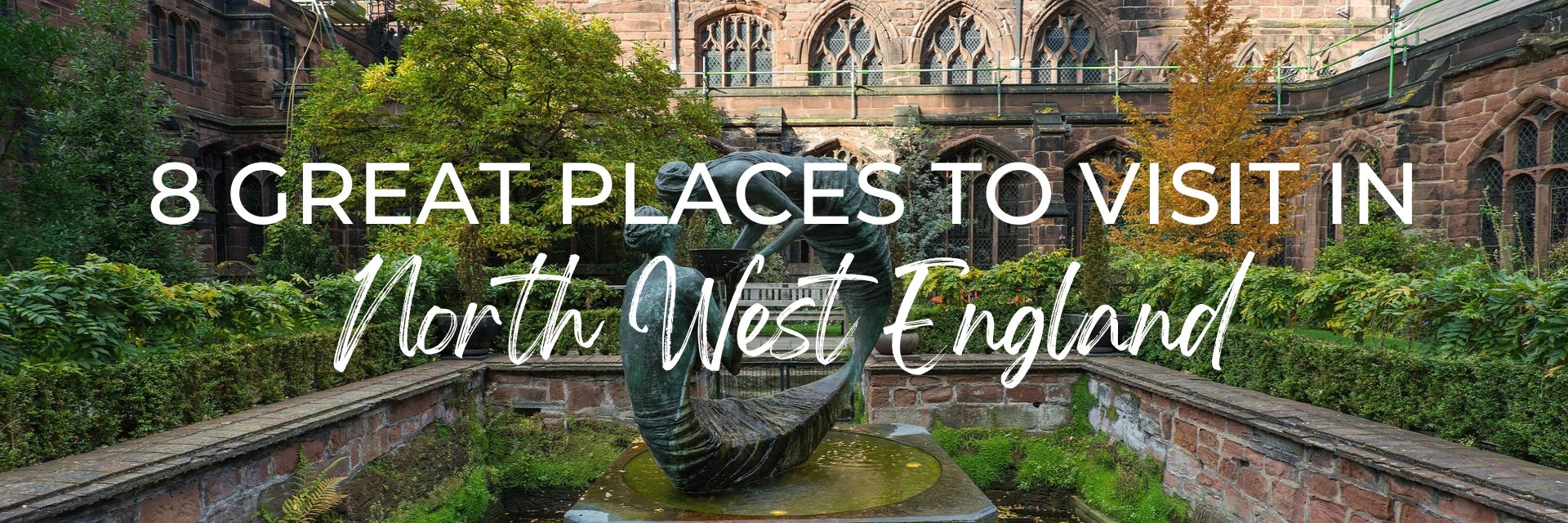
Step into the heart of England’s industrial revolution, where the magic unfolded – a transition from handcrafted treasures to the buzz of mass-produced wonders powered by steam and the birth of factories.
Brace yourself for a journey that transformed landscapes and ignited a surge in productivity!
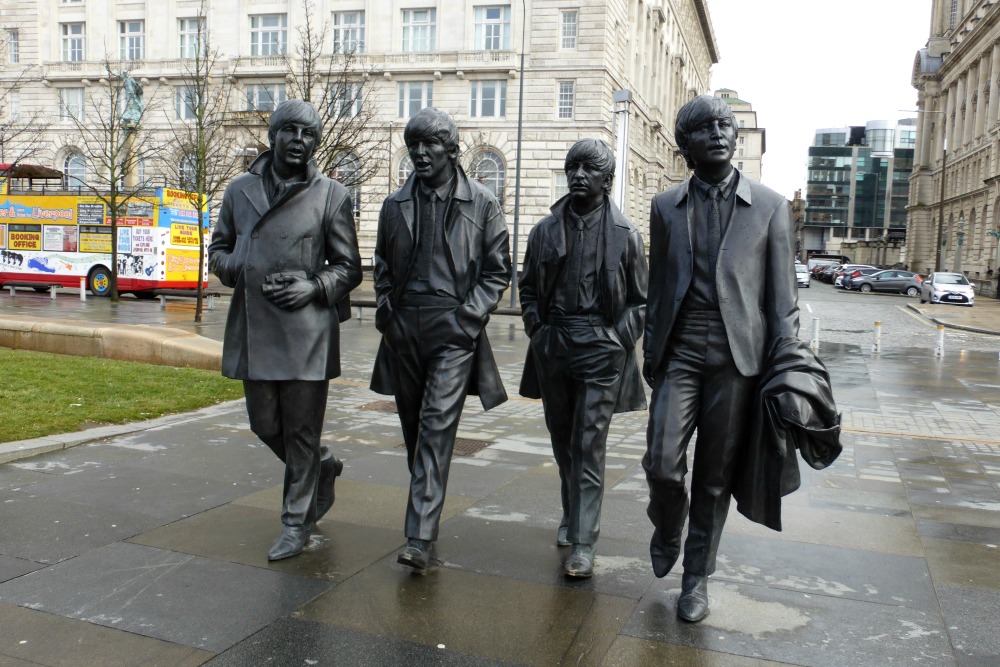
Fast forward to today, and the northwest, especially the vibrant Manchester, still wears the historical threads of textile mills that spun tales with imported cotton. Starting at Liverpool, these treasures sailed through canals to land in Manchester.
But venture beyond the bustling cities, and you’ll find the enchanting Lake District – a cherished UK National Park and UNESCO World Heritage Site. Picture postcard landscapes and quaint villages – such as Chester (one of my favourite England weekend getaways) await your exploration.
Whether your stay is a quick weekend escape, a leisurely week, or an extended retreat, we’ve handpicked eight incredible destinations in northwest England. Join us, along with insights from fellow travel bloggers, as we unwrap the best this region has to offer!
This post may contain affiliate links. Please read our full disclosure policy here.
TABLE OF CONTENTS
8 Great Places to Visit in North West England
Liverpool is a ‘City of Culture’, football and of course, music! It is also home to the Beatles, ‘speakeasies’ and the cool Baltic Triangle – Liverpool’s music scene is one of its biggest attractions.
Liverpool can be found in the northwest of England, close to Manchester and Leeds. In the past, the city was known as ‘Liuerpul’ which means ‘a pool/creek with muddy water’ which is not very sexy but apt because much of Liverpool’s history is based around water, especially the River Mersey.
Liverpool’s first stories date back to the 1200s with Liverpool Castle being completed in 1235. However, you won’t find a castle in the city now but there are still lots of other things to do in Liverpool.
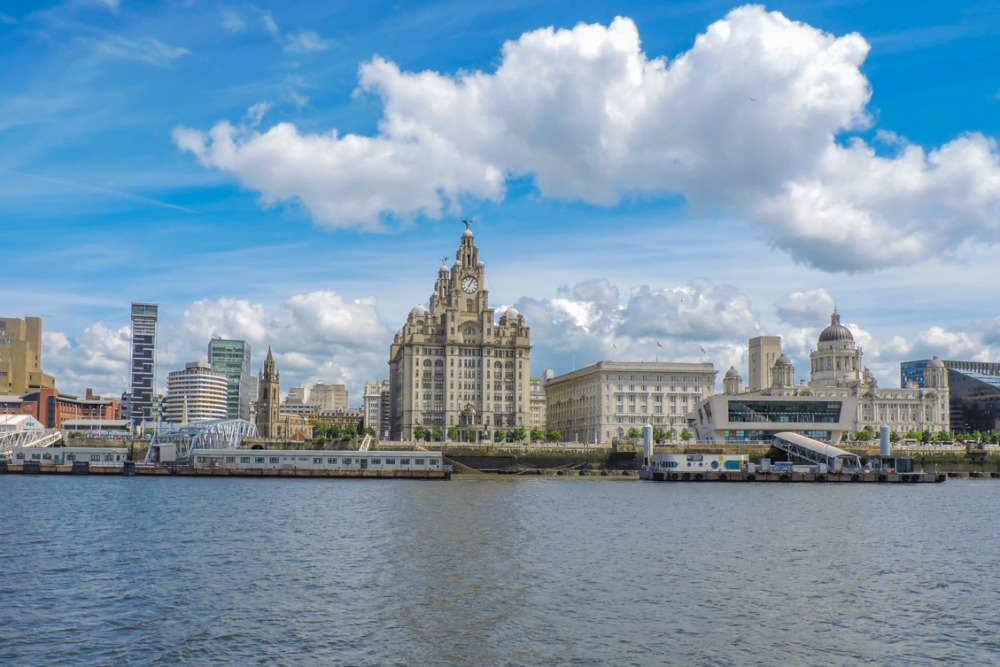
MUST DO IN LIVERPOOL:
- Mersey Ferry: Ride the ferry across the Mersey and then have the song stuck in your head all day! While you are there, take a stroll along Albert Docks taking in the Tate Liverpool and the Beatles Story.
- Watch Live Music: Watch a live band at the cheesy Cavern Club then another at the cool Baltic Triangle (check for events before booking) or party on Steel Street.
- Visit Bold Street: Catch some comedy, a bite to eat, and/or check out the independent stores on Bold Street.
Contribution from Gemma of Two Scots Abroad
Manchester is sometimes overlooked by travellers, but shouldn’t be because the former industrial city has a lot to offer.
The city is especially famous for football and music. One of England’s most famous football teams, Manchester United, is based here, together with their fierce rivals Manchester City.
Many famous musicians are Mancunian (from Manchester), including ‘The Smiths’ and ‘Oasis’, and there is always a vibrant music scene. Manchester is a place to come with old friends – or make new ones.
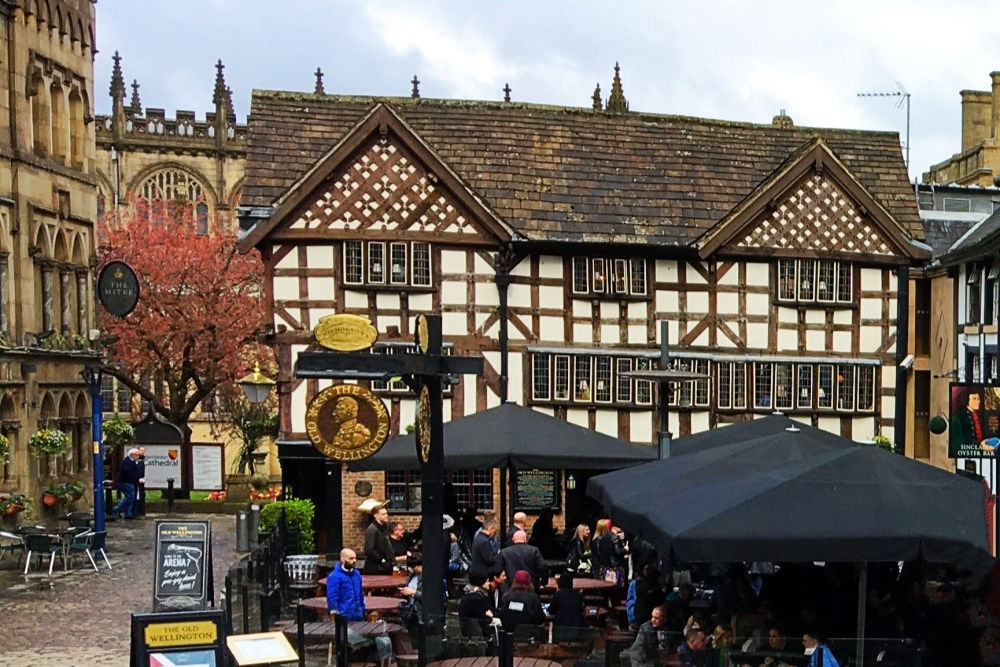
MUST DO IN MANCHESTER:
- Visit all things football: Old Trafford, home to Manchester United, has a museum and stadium tour. If you prefer their rivals (or want to be bipartisan) you can also take a tour of Manchester City’s Etihad Stadium. If you love football, you also won’t want to miss the National Football Museum in the centre of town.
- Have a pint in the Old Wellington pub: This hotel has been around since 1552 (though it was moved 300 metres to its current location in Shambles Square in 1999). It’s an old Tudor half-timbered building and evokes old England with its classic exterior and atmospheric and dark interior. It’s at its best, however, when the weather gets warm and you can sit outside and enjoy a glass of beer (or wine) and watch the world go by. As with many pubs in Manchester, there is often live music here.
- St. Peter’s Square and the Manchester Central Library: The Square is in the heart of Manchester and is a useful gathering place and a great spot to enjoy the buskers in summer. For a change of pace, the library, built in 1934 and renovated in 2014 is worth visiting for the interesting circular architecture and the temporary exhibitions. Check out their website for details of the latest exhibitions.
Contribution from James of Travel Collecting
Ideally situated in the heart of the Lake District National Park, Ambleside has recently been declared a UNESCO World Heritage site. The town is a quaint and interesting place for a visit and is surrounded on all sides by mountains.
Ambleside lies at the head of Lake Windermere which is the biggest lake in England. It is usually used as a base for tourists in the area as there are many things to do in Ambleside and the town has plenty of guesthouses and hotels for all budgets, as well as many shops selling outdoor, camping, and hiking equipment.
Many of the buildings, such as the “Bridge House” (a tiny house on a stone bridge over the River Rothay) and the old Market Place make walking around the streets feel like you have stepped back in time. Ambleside is well known for being the workplace of famous poet William Wordsworth, and the home of artist Kurt Schwitters in the two years prior to his death. For those interested in the art history of Ambleside, there is a small museum.

MUST DO IN AMBLESIDE:
- Explore the area next to Lake Windermere known as Waterhead: From the shore, you can rent a rowing boat or take a bigger steamboat all the way down to neighbouring Windermere. There are a few pubs with huge grassy gardens to have a traditional pub lunch and sample some local ales too. Be sure not to miss the famous “choc dip” ice cream at the cafe near the pier! For history lovers, Galava Fort ruins can be enjoyed nearby. The site is thought to have been built by the Romans as early as 1 AD and is free for the public to roam.
- Hike up Loughrigg: The closest mountain to the town centre is Loughrigg and can be reached through Rothay Park. The route is well-signposted, and it should take you around half an hour to reach the summit. Although not a strenuous hike, it can be steep in some places so suitable footwear is advised. Bring your camera so you can capture the magnificent view of Lake Windermere once you reach the top. If you are lucky, you may even see some low-flying jets fly up the lake towards you.
- Go for afternoon tea: A trip to Ambleside isn’t complete without sampling some delicious cakes and local tea and coffee in one of the many independent cafes around town. Many places advertise afternoon tea, and scones and cakes are usually fresh and delicious. If the sun is out you can find somewhere with a garden and enjoy your afternoon outside. Keep your eyes peeled for anywhere that brews “Farrers”, as they are a local independent tea and coffee merchant, that makes high-quality coffee and some tasty loose-leaf teas.
Contribution from Demi of Around the World With Her
Located in the northwest of England, Chester is an ancient Roman city dating back to the 1st century AD. In fact, it’s one of the oldest cities in Britain, despite being dwarfed by neighbouring cities of Liverpool and Manchester.
Known for its beautiful red sandstone Roman walls, which surround the inner city, its picturesque Chester Rows, and gorgeous Tudor-style half-timber buildings, Chester boasts a captivating history and should not to be missed when visiting England.
Throughout Chester, you’ll find hints of what remains of the historic Roman city that used to be. In one corner of the city, a Roman amphitheatre lies waiting to be fought in, and in another, you can find the remains of a Roman hypocaust, which was a system of central heating used during ancient times.
Although, not only does Chester provide a glimpse into history, it’s no doubt one of the most picturesque cities in England. Dating back to the 13th century, the two-tiered Chester Rows walkway style is found nowhere else in the world. They sure do make for some great photo ops!
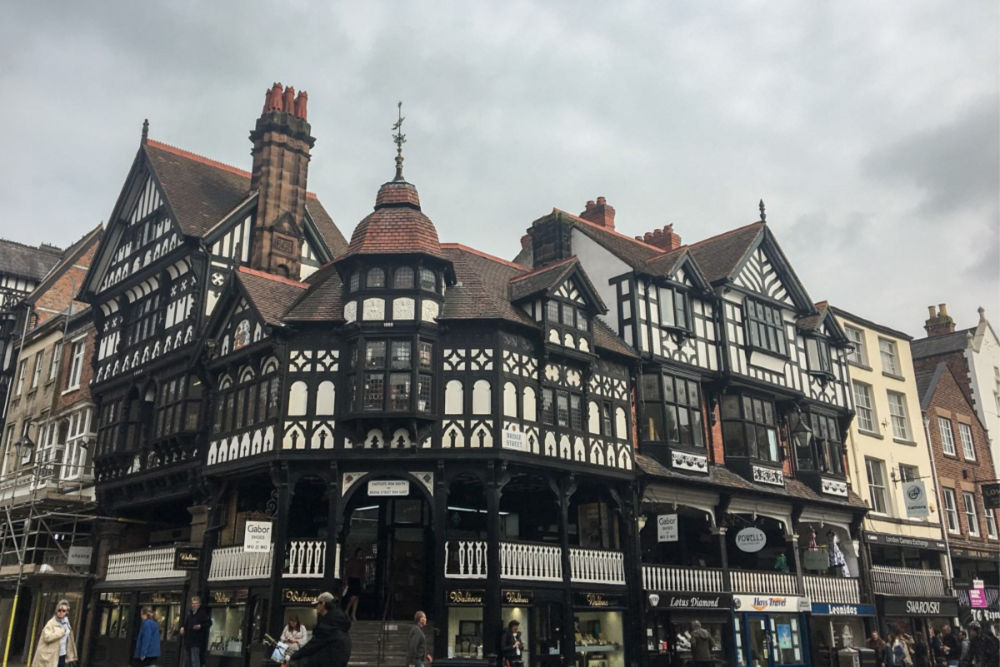
MUST DO IN CHESTER:
- Roman Walls: Walk the ancient Chester Roman Walls, which surround the city centre and are packed with cool history.
- Chester shops: Stroll through the Chester Rows and shop around in some of the oldest shops throughout Chester
- Chester Cathedral: Marvel at the Chester Cathedral with its beautiful architecture, stunning interior, and incredible adornments.
Contribution from Sophie of The Wanderful Me
Uppermill is an English village nestled in the hills of Saddleworth, on the Tame River, in Greater Manchester. Uppermill is an approximately thirty-minute drive from Manchester, one and three-quarter hours from Liverpool and under four hours from London. We visit in September, from Australia. It is cold and wet, with light rain; adding to our vision of what an English village should feel like.
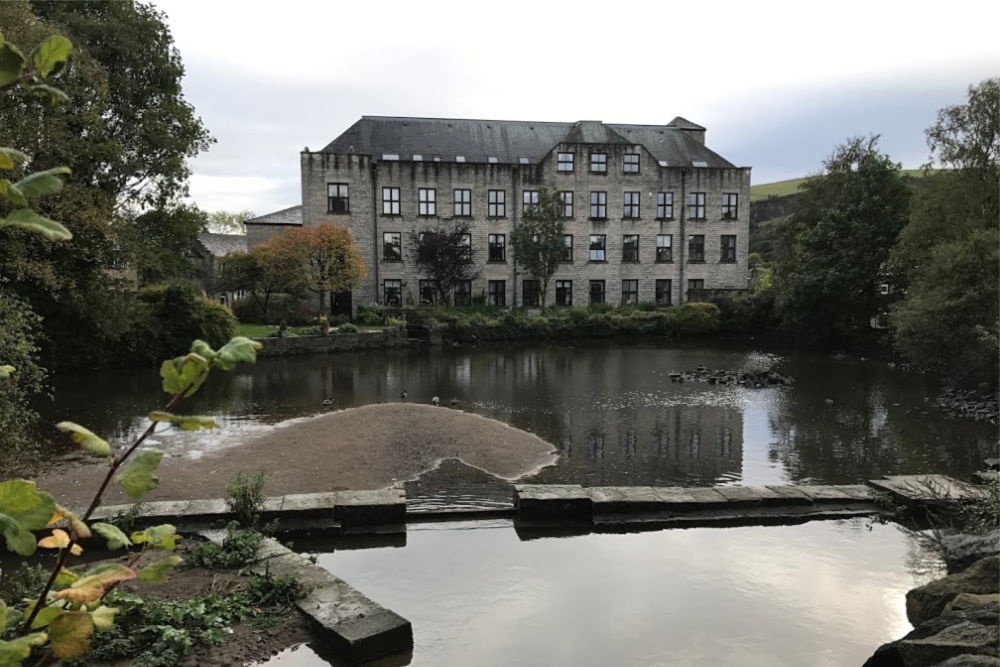
MUST DO IN UPPERMILL:
- Wander through the village: Enjoy the curved, quiet streets, dark brick and stone homes with small windows, local shops, an English Pub and Inn, English-style gardens and ducks and geese walking freely through the village.
- Take different paths along the Huddersfield Canal and River Tame: To see the ducks and geese and to gain a sense of the importance of these waterways for the production and movement of wool and cotton, spun in the local mills, during the industrial revolution. The Saddleworth Museum and Gallery located on the main street of Uppermill tells this story.
- Drive through Saddleworth Moor: This drive takes you 400 metres above sea level through rolling hills that are covered with cottongrass, heather, crowberry, bilberry, and peat which is 9000 years old – such distinctive vegetation. There is a chilling feeling as we drive through the Moors at night and it is not surprising that some have perished in this beautiful, isolated landscape. The Moor is stunning in its own way, so different from other mountain ranges in Europe, Canada, the USA, and our home in Australia.
Contribution from Cathy of Cathy Travelling
Blackpool has been a seaside resort for over 250 years as people flock to it to breathe in some sea air. The arrival of the railway in 1846 supercharged the town’s popularity and led to a new influx of visitors and to it becoming the only town in the UK with three piers – each full of attractions for visitors! More attractions have been added over the years that continue to keep the visitors entertained including the iconic Blackpool Tower that can be seen from across the town and the Pleasure Beach for thrill-seekers.
The town was one of the first in the world to use electric street lighting and every year in the run-up to Christmas, the seafront is ablaze with thousands of lights with the annual Blackpool Illuminations attracting visitors from all over. It was also the first town to install an electric tramway, which can still be ridden to this day.
Though cheap flights to warmer climes dented its popularity, Blackpool has weathered the storm and remains a great place to go and enjoy the Great British Seaside.
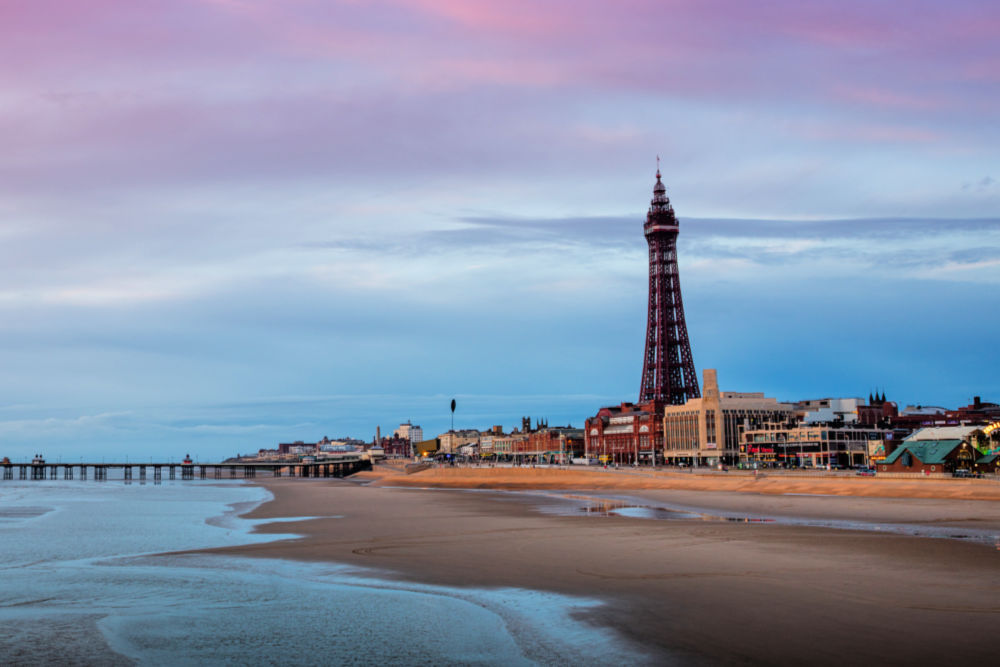
MUST DO IN BLACKPOOL:
- Blackpool Tower: Offering expansive views across Blackpool and out into the Irish Sea, the Blackpool Tower is the iconic symbol of Blackpool. Don’t miss the Comedy Carpet in front of the tower, covered in classic lines from UK Comedy.
- Pleasure Beach: If you love thrills and spills, then Blackpool Pleasure Beach has you covered. Right on the sea-front, there are rides aplenty to keep you screaming all day long.
- Ride the Blackpool Tramway: A great way to get around Blackpool and see the seafront sights, and you get to ride one of the oldest tramways in the world. If you visit while the Blackpool Illuminations are on, then look out for one of the illuminated trams.
Stockport was a manufacturing base for centuries, from making hemp and rope in the 16th century, silk in the 18th century, and the manufacturer of up to six million hats a year in the 19th century.
Once you escape from the large modern shopping centre, the more interesting and historic aspects of Stockport open up. From the must-do items listed below to the striking Stockport Viaduct whose 27 brick arches carry trains across the River Mersey between Manchester and Birmingham which prompted artist L. S. Lowry to feature the viaduct in some of his paintings. At the other end of the town is the impressive Market Hall which was established in 1861 and still serves the local community to this day.
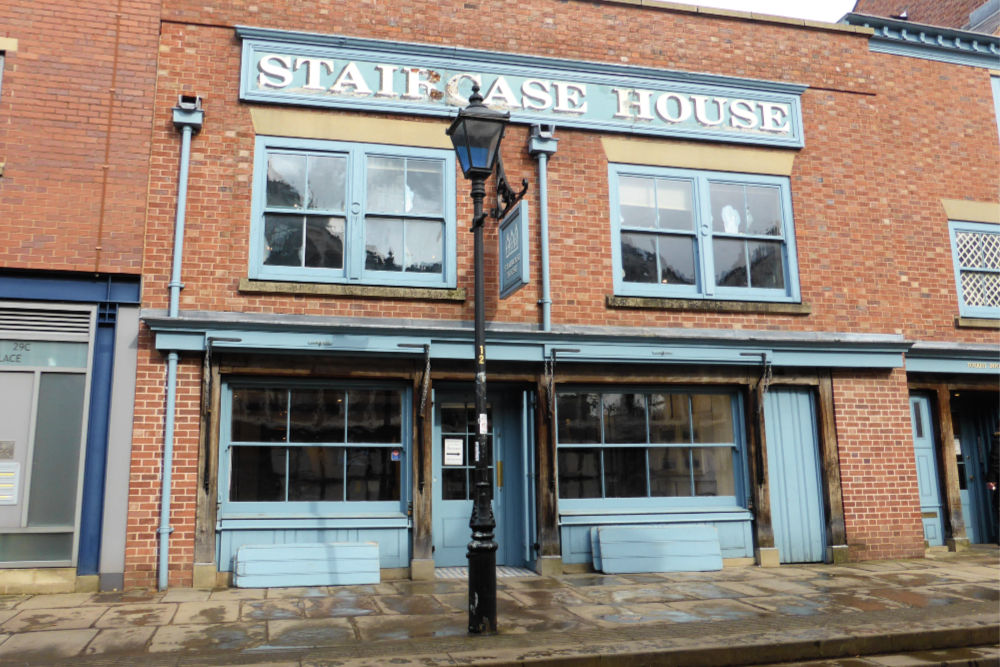
MUST DO IN STOCKPORT:
- Stockport Air-Raid Shelters: These were the actual air-raid shelters for Stockport during World War II. Carved into the sandstone to shelter the populace from Nazi bombing raids when the industrial centres of the northwest of England were targeted. Today the shelters are a museum which you can explore to see how the town’s people spent their time in the shelter.
- Staircase House: Stockport’s oldest townhouse is now a museum that shows how the home would have looked and evolved through time. The rooms show different time periods of the house from the 15th to the 20th centuries.
- Hat Works: Located in a Grade II listed Victorian Mill, the Hat Works museum showcases the once-thriving hatting industry of Stockport. There are hats of all varieties from around the world and restored Victorian machines which were once used to make them on display.
Stoke-on-Trent made its name as the home of the English pottery industry and can boast many famous names such as Royal Doulton, Spode, Wedgwood and Minton. The availability of coal and clay in the surrounding area made it perfect for making fine ceramics.
The surrounding areas were heavily mined for their coal and scars from mining can still be seen on the landscape. Several records were set in the area, including Europe’s deepest mine shafts at almost 3,200 feet underground.
Stoke-on-Trent has the distinction of being the only city in the UK which has multiple centres, this is because it was formed from six separate towns: Tunstall, Burslem, Hanley, Stoke, Fenton and Longton.
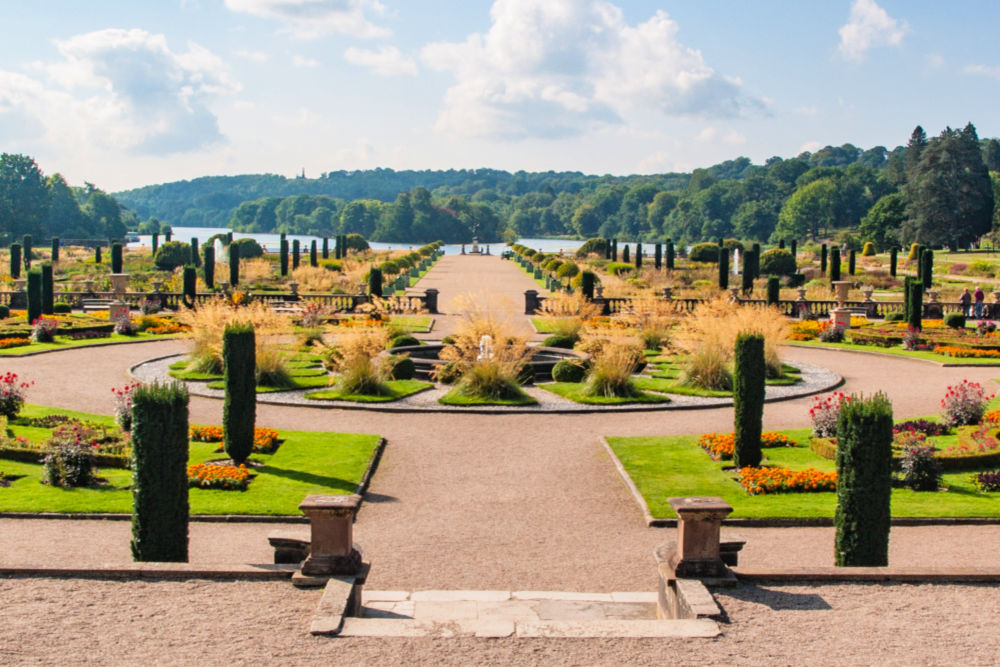
Photo Credit: Martyn Wright / CC BY 2.0
MUST DO IN STOKE-ON-TRENT:
- Etruria Museum: In the centre of England’s pottery-making history lies the only remaining operational steam-driven potter’s mill in the world. Learn how bone china does actually contain bone at the home of Jesse Shirley’s Bone and Flint Mill.
- Trentham Gardens: Stunning Italianate gardens complete with fairies at the bottom of them, the remains of Grand Entrance which were once part of Trentham Hall, and a monkey forest where 140 Barbary Macaque monkeys roam free in the forest; there is plenty to keep you busy on a day out here.
- World of Wedgwood: One of the most famous pottery companies in the world, Wedgwood has been making fine china for over 250 years. Come and see their craftsmen at work making ceramics from start to finish.
The north west of England is a treasure trove of history, natural beauty, and cultural richness. From the echoes of the industrial revolution in Manchester to the serene landscapes of the Lake District, each destination in our curated list offers a unique experience.
Whether you’re drawn to the historical charm of textile mills, the picturesque villages, or the expansive lakes, northwest England has something to captivate every traveller.
So pack your bags and set forth on a journey filled with history, beauty, and the warm hospitality of this remarkable corner of the UK!
Looking for more information to plan your visit to England? You may find these articles helpful.
RESOURCES | PLAN YOUR TRIP TO ENGLAND
To book flights, rental cars, accommodations, and activities for your trip, please check out our recommended travel providers, favourite apps and websites.
- For more great weekend ideas around England and the rest of Britain, check out one of my favourites – 52 Great British Weekends: A Seasonal Guide to Britain’s Best Breaks
- For weekend ideas in London – The Weekend Starts Here: Fifty-Two Weekends of Things to See and Do – will give you lots of ideas!
- For all things England, you can’t go wrong with Rick Steves! Check out his England travel guide, full episodes of his TV show, or download his app for excellent audio tours.
Some of the links in the post above are affiliate links. This means if you click on the link and purchase the item, we will receive an affiliate commission but this does not affect the price to you. Please read our full disclosure policy here.
